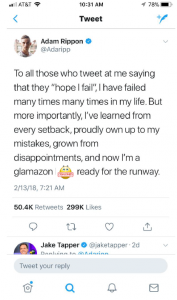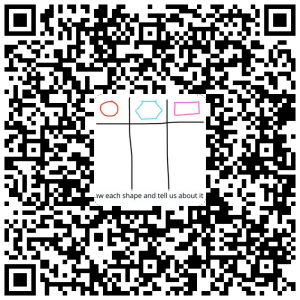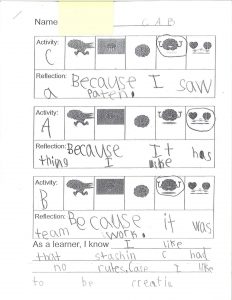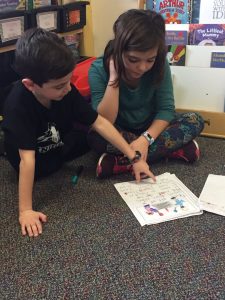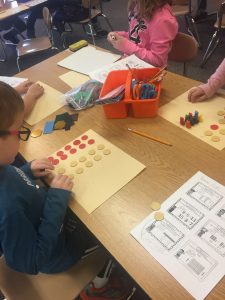February’s Growth Mindset
As our goals are nearing the end and we reflect on whether, or not, we reached them, we often look back and determine if we had the right game plan from the outset. When we set our goals, did we base it on a plan that we had already thought about? Did we just develop a goal that sounded effective without thinking about a plan to follow? Or, do we have a plan and find a goal that aligns properly? So many different ways to approach this topic.
The Legend of Michael Jordan
Many of you may have already heard the story of Michael Jordan, but if you haven’t, we thought this would be the opportune time to share. Michael Jordan is described today as the greatest basketball player of all time, but did you know he was cut from the his varsity basketball team? The day Jordan saw his name on the “cut list” was an embarrassing moment for him. It was the moment that he says he went home, locked himself in his room, and cried.
What he did from this moment on is legendary. He picked himself up and turned “the cut” into motivation. “Whenever I was working out and got tired and figured I ought to stop, I’d close my eyes and see that list in the locker room without my name on it. That usually got me going again”, Jordan states. Jordan established an effective plan that enabled him to become the greatest basketball player of all time. His goal was reached! He had a goal, and from that point on, a plan to be a success. That plan led Michael Jordan to becoming the greatest player of all time.
This event occurs more and more than we realize. Individuals reach failure before success follows. Is this just because when we set our goals we never have a plan in place? Or, does it take failure for us to better understand that a different set of plans needs to be in place for success.
What does Michael Jordan have to do with Growth Mindset?
Goal setting is a powerful part of using the growth mindset to overcome challenges. Without a concrete idea of what you want and a vision of how you’re going to get there, it’s easy to slip back into a fixed mindset.
Michael Jordan didn’t want to see his name back on that ‘cut’ roster, so he set goals for himself,overcame his biggest challenges, and had a vision of where he wanted his playing career to go from there. He never allowed himself to fall into that fixed mindset (unless of course you consider his baseball career with the dreaded White Sox! ) =)
Students have the ability to create their own potential through deliberate practice, and it’s false to believe that we have predetermined potential for building skill or developing talent in certain areas. People should also stop believing that there’s a ceiling on their potential, and instead view it as something that can be continually developed with learning and practice.
As teachers, we are not in the position to personally train children to become masters in a given field, but what we are capable of is instilling in students. The belief that with enough deliberate practice and dedication to a task, students can make incredible strides.
How can I use this in the classroom?
So many people feel that many famous people are so naturally talented in their field that their path to success was an easy one. Society likes to relish in the notion that some people are just born for greatness. This is a great way to use inquiry to allow students to research and uncover the truth about how much sweat and toil, how many hours, how many failures go into creating a master. Students will begin to learn that planning and dedication is the foundation to reaching their goals.
How to Set Goals – That You Will Achieve!
Goal setting is the process of deciding what you want to accomplish and devising a plan to achieve the result you desire.
This goal setting definition emphasizes that goal setting is a two-part process. For effective goal setting, you need to do more than just decide what you want to do; you also have to work at accomplishing whatever goal you have set for yourself.
For many people, it’s the second part of the goal setting definition that’s problematic. They know what they want to do, but have trouble creating a plan to get there. Once they find that successful role model, then the process becomes fun! The best way to get motivated as well, is to be around someone already motivated! Goals without action plans are just words, or just dreams.
The first step in setting goals is to get clear on what the end result is that you desire. As it’s been stated, you cannot hit a target that you cannot see.
- Create a compelling Vision (Goal)
- Reasons – know why you want this goal? Wish or decision? If you don’t follow-through on your action plan in the first 2-weeks then you don’t have compelling reasons to stick it out when times get tough…This means you need to get more leverage
- Find a model of success and interview them! You must have a plan that you are certain will work!
- Accountability Accountability Accountability- You Can’t manage what you don’t measure
A Final Thought to Share
Failure is a common theme when our goals are set and plans are not made. Failure is experienced by almost everyone, so when we saw this tweet recently we thought we’d share. Adam Rippon is a US Olympic Figure Skater competing in this year’s Winter Olympics. He has come under heavy scrutiny leading up to the Winter Olympics and felt the need to tweet out after his unbelievable performance in team competition.
“To all those who tweet at me saying that they ‘hope I fail’, I have failed many, many times in my life. But more importantly, I’ve learned from every setback, proudly own up to my mistakes, grown from disappointments, and now I’m a glamazon b**** ready for the runway.”- Adam Rippon, US Olympic Team
